Bart Ross | Recovery Services Manager
In December 1934, Bill W. left Towns Hospital sober and began attending Oxford Group meetings. He knew he had to pass on his experience to stay sober himself. He sought out alcoholics at Towns Hospital and Calvary Mission, trying to share the message of hope. Bill had been sober for five months when he met Dr. Bob on May 12, 1935. Dr. Bob had his last drink on June 10, 1935. At that time, the two men searched for other alcoholics to pass on what would become the 12-Steps. All they had was their own experience.
In 1937, Bill W. suggested writing a book to keep the message of recovery consistent.
He also felt it would be the best way to reach more alcoholics that were suffering. At that time, there were approximately 40 sober alcoholics. Bill W. also had a few other ideas for spreading their method of recovery to more alcoholics. Although Dr. Bob was open to writing a book, he didn’t like Bill’s other ideas. After meeting with the rest of the recovered alcoholics, they all agreed on the book. The most important reason for writing a book was to prevent anyone from being uninformed of exactly what they had done to recover. Without a book, it would be open to interpreting what they were doing, and the message would get lost.
“Much has been written, much has been said about the 12 steps of A.A. These tenets of our faith and practice were not worked out overnight and then presented to our members as an opportunist creed. Born of our early trials and many tribulations, they were and are the result of humble and sincere desire, sought in personal prayer for Divine guidance. As finally expressed and offered, they are simple in language, plain in meaning. They are also workable by any person having a sincere desire to obtain and keep sobriety. The results are proof. Their simplicity and workability are such that no special interpretations, and certainly no reservations, have ever been necessary. And it has become increasingly clear that the degree of harmonious living which we achieve is in direct ratio to our earnest attempt to follow them literally under Divine guidance to the best of our ability.” (Excerpt taken from a Grapevine article by Dr. Bob, September 1948)
“But the basic text (pages 1 through 164) remains unchanged.
This is the A.A. message, just as it was introduced in the 1939 “Alcoholics Anonymous,” the book that gave the young fellowship its name.” (Big Book dust jacket, third edition)
“At the time of the third edition, in March 1976, the worldwide membership of A.A. was estimated at 1,000,000 or more. Copies of “Alcoholics Anonymous” in circulation exceeded 1,450,000. The basic text, pages 1 – 164, which had been the foundation of recovery for so many alcoholics remained, and still remains, unchanged.” (Big Book dust jacket, fourth edition, first printing)
Notice the change in the writing of the dust jackets. These small changes of words can hurt the A.A. message. For example, the phrase “had been the foundation of recovery” can be left open to interpretation. Unlike this writing on the 2001 dust jacket, the book authors were cautious not to leave things unclear and open to interpretation. The rest of the things I’ll point out in this article are in the program portion of the book and will hopefully continue never to change. They will show how careful the authors were to preserve the message of recovery from being interpreted to prevent the message from being watered down.
“Because this book has become the basic text of our society and has helped such large numbers of alcoholic men and women to recover, there exists strong sentiment against any radical changes being made in it. Therefore, the first portion of this volume, describing the A.A. recovery program, has been left untouched in the course of revisions being made for the second, third and fourth editions. The section called “The Doctor’s Opinion” has been kept intact, just as it was originally written in 1939 by the late William D. Silkworth, our society’s greatest medical benefactor.” (Big Book, page xi)
Here, the words basic and text were chosen purposefully.
The writers used “basic text” to express the importance of the principles (12-Steps) that must be followed as they had done themselves in order to recover.
“WE, of Alcoholics Anonymous, are more than one hundred men and women who have recovered from a seemingly hopeless state of mind and body. To show other alcoholics precisely how we recovered is the main purpose of this book.” (Big Book, page xiii)
In this quote, three words are noted. Precisely, main, and purpose. This introduces who the writers are and what has happened to them due to their writing. They tell the reader that the most important reason for the book and the only intention for writing is that if the reader does precisely what they did, they will recover.
“The tremendous fact for every one of us is that we have discovered a common solution. We have a way out on which we can absolutely agree, and upon which we can join in brotherly and harmonious action. This is the great news this book carries to those who suffer from alcoholism.” (Big Book, page 20)
In this paragraph, we read how they emphasize a common solution and agreement without any discord. Here we can see how they let us know that there is no need for interpretation or change. What we are reading is the program. I love the way they say the tremendous fact; there is no need for change, this works, and it works for alcoholics.
“If you are an alcoholic who wants to get over it, you may already be asking -“What do I have to do?” It is the purpose of this book to answer such questions specifically. We shall tell you what we have done.” (Big Book, page 20)
Here, the term specifically is selected to mean in a way that is exact and clear, precise, or for a particular purpose. In this paragraph, an important question is asked. If the reader answers yes, then they are given hope with a promise of specific directions based on the authentic experience of how to recover. Again, the writers confirm being precise in conveying the recovery program but using the word “specifically” instead. They tell us what the book is for and also reinforce that it is from their experience.
“Further on, clear-cut directions are given showing how we recovered.” (Big Book, page29)
Clear–cut means sharply defined, easy to perceive, or understand. The recovery message’s simplicity is laid out for the reader to realize the problem and understand the directions. I know some of the Big Book’s wording can be older. But the wording for the actual rules is still everyday language and simple to follow, such as the quote below:
“Simple but not easy; a price had to be paid.” (Big Book, page 14)
“Lack of power, that was our dilemma. We had to find a power by which we could live, and it had to be a Power greater than ourselves. Obviously. But where and how were to find this Power? Well, that’s exactly what this book is about. Its main object is to enable you to find a Power greater than yourself which will solve your problem.” (Big Book pg. 45)
In this example, the purpose is the reason something is done, created, or exists. Forty-five pages plus another eight, including The Doctors Opinion, detail the actual problem, which is the lack of power, and tell us without any discrepancy the critical purpose of the book.
“Rarely have we seen a person fail who has thoroughly followed our path. Those who do not recover are people who cannot or will not completely give themselves to this simple program.” (Big Book, page 58)
Starting the chapter with the words “How It Works” indicates the writers begin with hope and follow with a warning. They’re telling the reader as long as you go along with the directions and not stray off the path in any way, you will recover. But if the reader does not thoroughly follow the path as outlined, completely giving themselves to the simple program, they won’t recover. This concept is pretty direct.
I was a “will not,” so I could not. Then in 1995, out of desperation, I became an “I will,” so I did. I discovered that I recovered when I followed the precise, clear-cut, specific, and exact directions of what the writers had done.
An alcoholic of the type described in the Big Book has to live the program as outlined. Any interpretation or alteration by myself or anyone else is doomed to failure. I have seen many people, including myself, experience this unnecessary result. Don’t let anyone read your Big Book for you! Remember, if it’s not in the book, then it’s not the A.A. program.
I once said, “My program’s not working.” The reply I got saved my life. It was, “No s**t! Try ours.”
I remember many years ago hearing a young man walk up to an old-timer and say, “I don’t understand. I want to stay sober, but I don’t know how.” The old-timer replied, “It’s in the book. Bill left the message for us.” Wow, it’s just that simple!
“Thus, we grow. And so can you, though you be but one man with this book in your hand. We believe and hope it contains all you need to begin. We know what you are saying to yourself: “I’m jittery and alone. I couldn’t do that.” But you can. You forget that you have just tapped a source of power much greater than yourself. To duplicate’ with such backing, what we have accomplished is only a matter of willingness, patience and labor.” (Big Book pages 162-163)
As the book nears the end, we are reminded one more time that we don’t need to understand why it works. We don’t try our interpretation. We don’t have to improve anything as long as we have had an experience ourselves, have the willingness, practice patience, and are ready to do some work. Then we have the book of clear-cut directions in hand, and God will do the rest.
The last two paragraphs of the Big Book were read to me after my sponsor suggested that I walk over to a newcomer and offer my help. I felt that my newly sober self couldn’t help him. That was me trying to rearrange the program to fit my fear.
Well, I trusted the reading, and it worked out great. I believe this article describes what is meant by KEEP IT SIMPLE! Trust God, clean house, and help others. Please, always feel free to email me at bross@originsrecovery.com.
Hanley Center is a well-known care provider offering a range of treatment programs targeting the recovery from substance use, mental health issues, and beyond. Our primary mission is to provide a clear path to a life of healing and restoration. We offer renowned clinical care and have the compassion and professional expertise to guide you toward lasting recovery.
For information on our programs, call us today: 561-841-1033.




